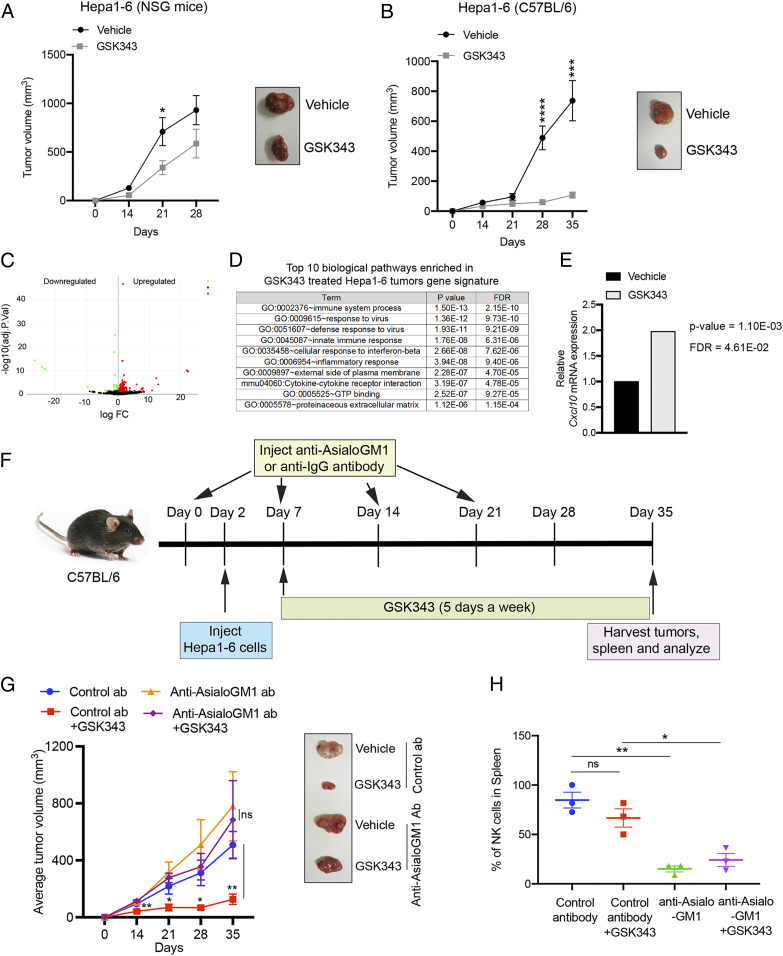Fig. 5.
NK cells are required for EZH2 inhibitor-mediated tumor suppression in a syngeneic mouse model of hepatic tumor growth. (A) Hepa1-6 cells (1 × 105) were injected subcutaneously into NSG mice (n = 8). After 5 d, mice were treated with 20 mg/kg GSK343 or vehicle control; treatment was administered 5 d/wk via i.p. injection for 28 d. Average tumor volumes at the indicated time points for vehicle- or GSK343-treated mice are plotted; representative tumors are shown at Right. (B) Hepa1-6 cells (3 × 106) were injected subcutaneously into C57BL/6 mice (n = 8). After 5 d, mice were treated with 20 mg/kg GSK343 or vehicle control; treatment was administered 5 d/wk via i.p. injection for 35 d. Average tumor volumes at the indicated time points for vehicle- or GSK343-treated mice are plotted; representative tumors are shown at Right. (C) Volcano plot showing genes that are differentially expressed in GSK343-treated Hepa1-6 tumors compared to vehicle-treated tumors. (D) The top 10 biological pathways enriched in gene signatures from GSK343-treated Hepa1-6 tumors. (E) Cxcl10 mRNA expression levels from RNA-seq analysis of Hepa1-6 tumors treated with GSK343 or vehicle control. (F) Schematic showing the timeline and experimental strategy for NK cell depletion assays. (G) Average tumor volumes (n = 10) for the indicated conditions are plotted; representative tumors are shown at Right. (H) Relative percentage (%) of NK cells in spleens from mice (n = 3) treated with indicated antibodies and either GSK343 (20 mg/kg) or vehicle control, 5 d/wk for 35 d. Data are presented as the mean ± SEM; ns, not significant; *P < 0.05, **P < 0.01, ***P < 0.001, and ****P < 0.0001.

